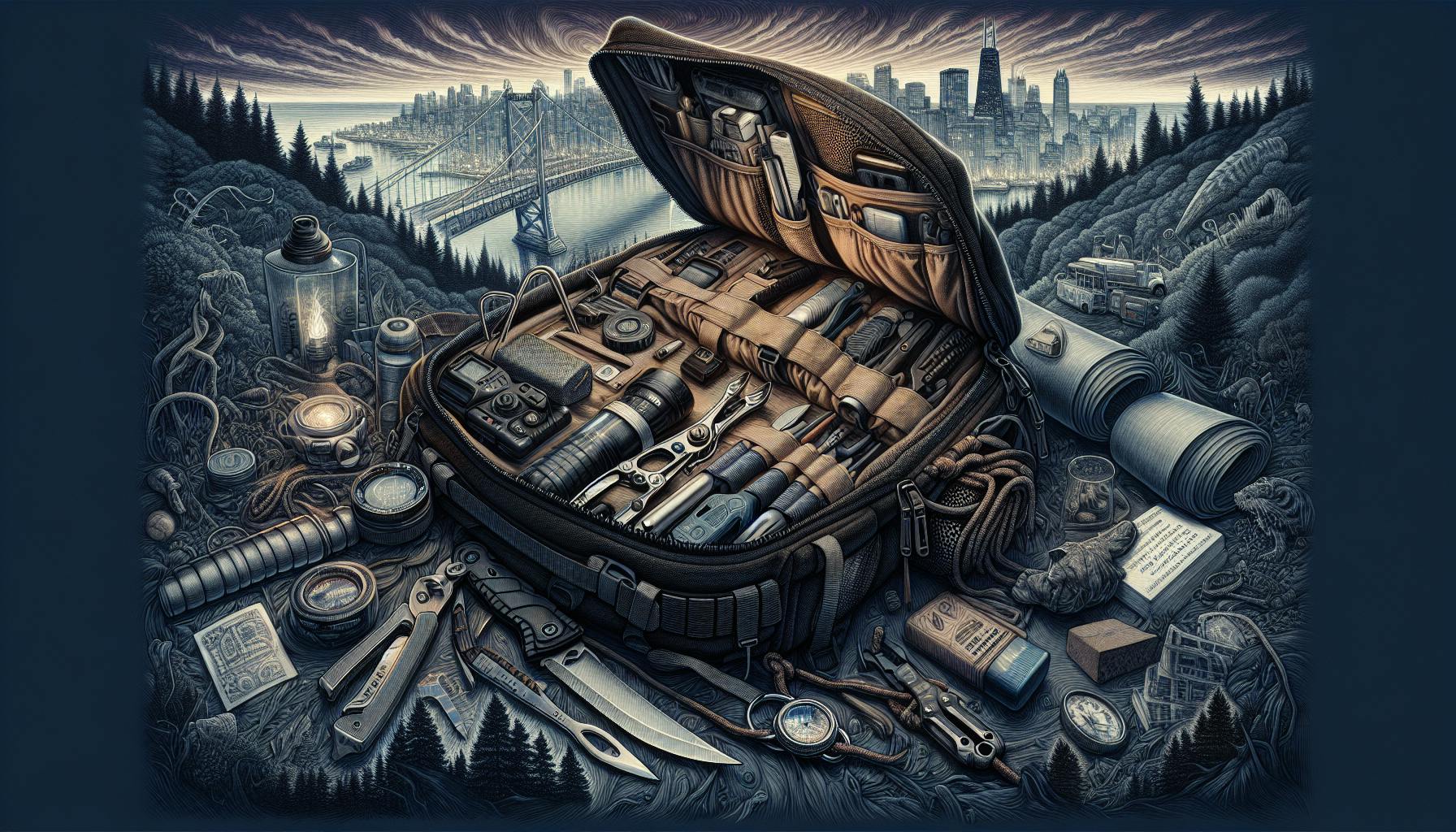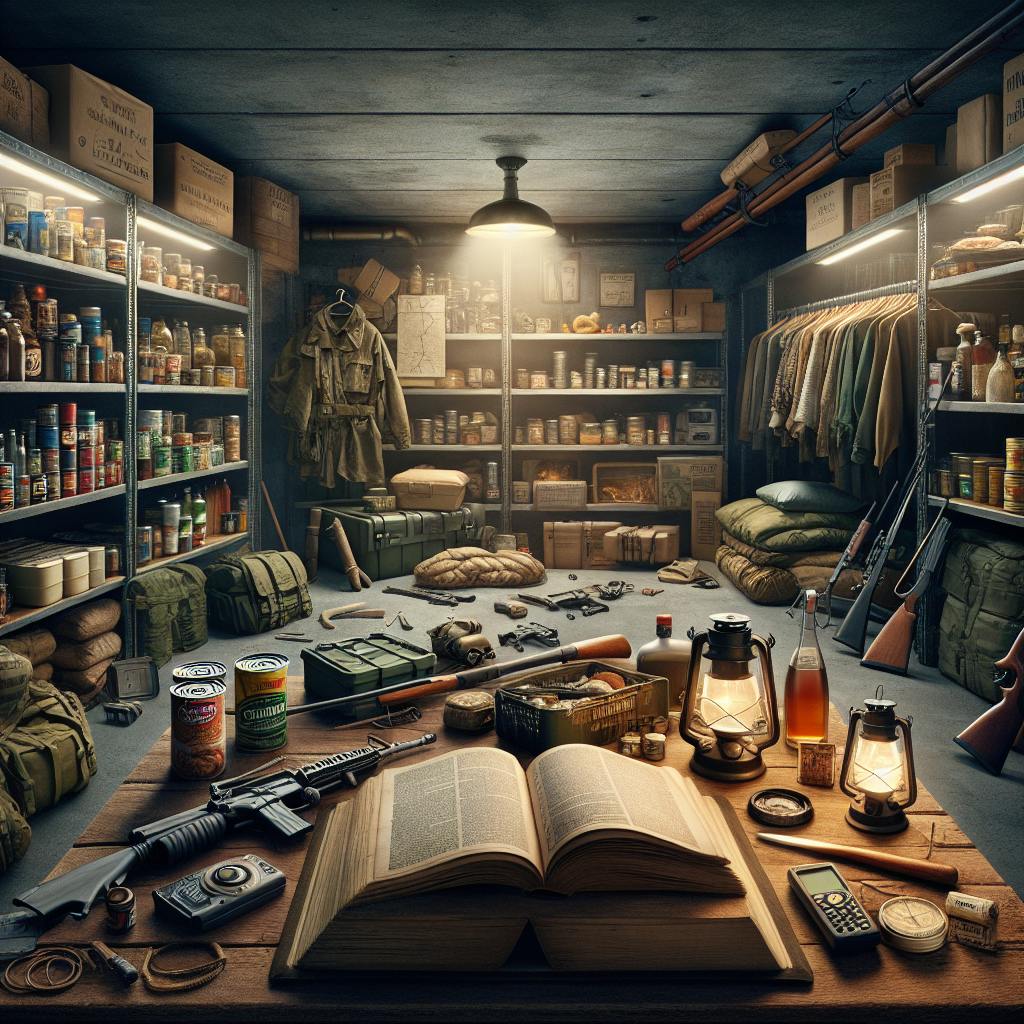The threat of an electromagnetic pulse (EMP) attack is a growing concern. An EMP can occur naturally from solar flares or be triggered artificially through nuclear explosions high in the atmosphere. Either way, the electromagnetic energy overload can fry electrical circuits and render most modern technology useless in an instant.
Without power, transportation, and communication infrastructure, society as we know it would come to a standstill. Electronic devices from phones to cars would be fried. Food refrigeration, water treatment facilities, and healthcare would be severely disrupted.
In the aftermath of an emp survival event, survival would depend heavily on being prepared with non-electronic gear and supplies. This article will cover some of the most essential tools and provisions to stockpile for resilience in an EMP scenario.
At WeLovePrepping, we are dedicated to equipping our readers with actionable information to enhance emergency preparedness. The tips below are a starting point, but we encourage further research into building comprehensive EMP preparations tailored to your situation.
Essential Base Supplies
Certain basic provisions will be vital for meeting fundamental survival needs after an EMP knocks out power and supply chains. Prioritize stocking up on:
-
Water filtration/purification - Stock up on gravity water filters like the Sawyer Mini Water Filter, which filters up to 100,000 gallons. Also have water purification tablets like Potable Aqua, and a rainwater catchment system with a 55 gallon drum and gutter attachments.
-
Alternative cooking - With gas stoves inoperable, rely on a GoSun Sport solar oven, BioLite CampStove and Wood Burning CampStove, which allow you to cook with wood in addition to the integrated electric starter. Have a propane camp stove like the Coleman Gas Camping Stove with extra propane canisters.
-
Fuel - Store propane, kerosene, lamp oil, and dry firewood for cooking/heating needs. Stockpile propane via 20 lb refillable tanks, and lamp oil like Lamplight Farms Lamp Oil.
-
Food - Stockpile imperishable foods like white rice, dried beans, canned meat, honey, salt, and naturally preserved jerky. Have heirloom, open-pollinated garden seeds like heirloom tomatoes, peas, and peppers that can be saved and replanted. Consider rabbits or chickens for renewable protein.
-
First aid - Have trauma supplies like QuickClot bandages, sutures, skin staplers, and medications like antibiotics, painkillers, anesthetics. Stock manuals and references like the Survival Medicine Handbook.
-
Defense - Stock knives, batons, pepper spray, and firearms where permitted. Secure in EMP-proof containers like SafeGuard Armor Faraday bags.
Must-Have Tools and Equipment
Beyond the basics for survival, many tools and multipurpose equipment will prove invaluable:
-
Lighting - Stockpile candles, oil lamps like Lamplight Farms lamps, and hand-crank flashlights/radios like the Esky Emergency Radio/Flashlight. Use red lenses to preserve night vision.
-
Hygiene - Have soap bars, reusable toothbrushes, toilet paper, female hygiene items like reusable menstrual cups. Setup a sanitary latrine area.
-
Tools - Have axes, folding saws, shovels, hoes, wrenches, P-38 & P-51 military can openers, sewing kits with heavy duty needles. Have a Simple Pump hand well pump for water. Stock backup eyeglasses.
-
General supplies - Store tarps, duct tape, paracord, zip ties, batteries, paper, pens, reference books, playing cards, silver coins. Use heavy duty trash bags and storage containers.
-
Navigation - Have local topographic maps, lensatic compasses, protractors for navigation. Learn celestial navigation skills.
-
Clothing/shelter - Get sturdy boots, cold weather clothing, tents, sleeping bags, thermal blankets and pads like the SOL Emergency Blanket.
Essential Survival Skills
Beyond stockpiling the right gear, cultivate fundamental skills for procuring the necessities of survival:
-
Foraging - Learn to identify local edible berries, nuts, wild greens, and mushrooms. Reference foraging books to aid in plant identification. Learn trapping, fishing, and hunting skills.
-
Navigation - Study terrain association, tracking, weather patterns, and use of topographic maps and a lensatic compass. Leave rock cairns, marking paint, or other trail markers as you move.
-
First Aid - Take wilderness first aid courses to learn how to stop bleeding, immobilize fractures, disinfect wounds, treat allergic reactions and shock, and assist in emergency childbirth.
-
Self-defense - Take tactical defense courses to learn hand-to-hand combat. Practice safe firearm handling and accuracy.
-
Fire - Learn techniques like flint & steel, ferro rods, and fire plows. Practice fire building with damp tinder.
-
Food preservation - Learn techniques like smoking meat, salting fish, canning vegetables, preserving in oil, and building root cellars to store vegetables.
-
Shelter - Study natural shelter construction including debris huts, lean-tos, and subterranean dugouts. Insulate from ground and weather.
Navigation and Tracking
-
Use landmarks, compass, protractors, and the stars to navigate. Read terrain for potential water sources.
-
Leave trail markers like rock cairns and follow techniques like 'hugging' and 'boxing' a search area to avoid getting lost.
-
Learn tracking skills involving identifying prints, scat, and other signs to locate animals, water, or lost group members.
Foraging and Growing Food
-
Identify edible plants like dandelion, clover, cattail, wild berries and know ideal harvest times and habitats.
-
Construct basic snares from paracord to catch small game like rabbits, snakes, and squirrels. Use all parts of animals.
-
Learn to make fish weirs to passively trap fish. Make fishing nets from paracord. Fish with spears and angling gear.
-
Save seeds from open-pollinated crops like beans, squash, and cherry tomatoes. Grow resilient heirloom varieties in a garden.
Essential Gear and Tools for Security
Maintaining security will be critical in an EMP scenario. Prioritize:
-
Communication - Stockpile two-way radios like the Motorola T600 H2O. Use coded language. Have signal mirrors, whistles, and flares for signaling.
-
Observation - Get binoculars and periscopes for discreet scouting from hidden locations. Use tripwire alarms and noisemakers to detect intruders.
-
Barriers - Use barbed wire, sandbags, spiked barricades to fortify entry points. Board up windows and install heavy duty locks.
-
Lighting - Stock infrared flashlights, headlamps, and floodlights to illuminate areas at night.
Defensive Weapons and Tactics
-
Use bows, crossbows, and slingshots for quiet hunting and defense. Make shields from stiff leather or wood.
-
Keep firearms in EMP-proof Faraday bags. Practice shooting at range and maneuvers like break contact drills.
-
Establish escape tunnels, hidden caches of supplies, and multiple rally points. Change locations and patterns frequently.
-
Use natural camouflage like foliage and paint. Learn stealth movement techniques. Take and secure high ground.
Secure Communication
-
Use encrypted two-way radios. Develop code words. Have designated runners travel to relay messages as a backup.
-
Leave discreet messages at dead drop locations. Mark potential cache locations using symbols like an 'X'.
-
Avoid smoke, noise, and lights to evade detection. Have discreet, randomized contact times with friendly groups.
Essential Medical Supplies and Skills
Medical care will be extremely limited after an EMP, making prevention and preparedness vital:
-
Medicines - Stockpile antibiotics like amoxicillin, pain meds like ibuprofen, medications for chronic conditions, and vitamins. Know proper dosages.
-
Instruments - Have surgical staplers, scalpels, sterilized sutures, cloth for bandages. Sterilize equipment.
-
Dental - Stock dental extraction forceps. Use temporary filling materials like gum and cloves. Manage dental pain and infections.
-
Resources - Get anatomy references, manuals on herbal medicine and wilderness first aid.
-
Prevention - Use water filters, practice basic hygiene and sanitation, maintain nutrition and fitness levels. Establish quarantine areas.
Wound Treatment
-
Use direct pressure, tourniquets, and hemostatic agents to stop bleeding. Irrigate wounds with clean water. Close with sterilized sutures or staples.
-
Remove debris using sterilized tweezers. Recognize and treat for wound infection. Manage pain without medications.
General Care Provisions
-
Stabilize fractures with splints made from boards, sticks, cardboard. Elevate injured limbs to reduce swelling.
-
Improvise slings and braces from clothing or towels. Monitor patient hydration, vital signs.
-
Sterilize equipment, wash hands thoroughly. Safely deliver baby and care for mother and newborn.
-
Provide end-of-life palliative care without medications. Bury deceased safely away from water sources.
Power Alternatives
With the electrical grid down, power will be extremely limited. Some options to generate power include:
-
Solar generators like the Jackery Explorer 500 can charge devices and run small appliances and electronics.
-
Pedal power generators allow you to generate electricity from physical effort. Consider the Hotoam 450W generator.
-
Small solar panels can charge batteries, run LED lights and small devices. Goal Zero's Boulder 100 Briefcase is very portable.
-
Wind turbines can generate consistent power if sited correctly. The WindyNation 100W turbine is a good option.
Communication and Organization
Being able to communicate and stay organized will be key for survival:
-
Establish protocols using two-way radios for broadcasting emergencies, scheduling meetings, maintaining security.
-
Designate leadership roles for coordinating resources, planning operations, overseeing medical care, security, and other key functions.
-
Maintain records of supplies, duties, schedules. Track illnesses and injuries. Manage sanitation, hygiene.
-
Boost morale with routines, recreation, team building activities. Maintain spiritual practices. Monitor for emotional needs.
-
Gather intelligence by questioning newcomers, observing outside groups, surveilling high risk areas. Analyze threats.
Final Thoughts
Preparing for an EMP requires significant forethought and investment into non-electronic tools and skills. But the effort will be rewarded if disaster strikes, enabling self-reliance and survival.
This article covered some of the most useful emp survival provisions and abilities to cultivate now, before it's too late. But there are many more quality gear and training options not listed here. We encourage you to continue researching and expanding your EMP preparations using trusted resources.
With thorough planning and practice today, you can have confidence in your ability to provide for yourself and your loved ones, no matter what the future brings. The actions you take will empower you to survive and thrive.


